你知道嗎?
腸道內有70%的免疫細胞
乳鐵蛋白為身體免疫作戰指揮,幫助平衡腸內菌叢並支持補充免疫力所需。
腸內微生態平衡 = 增強免疫反應
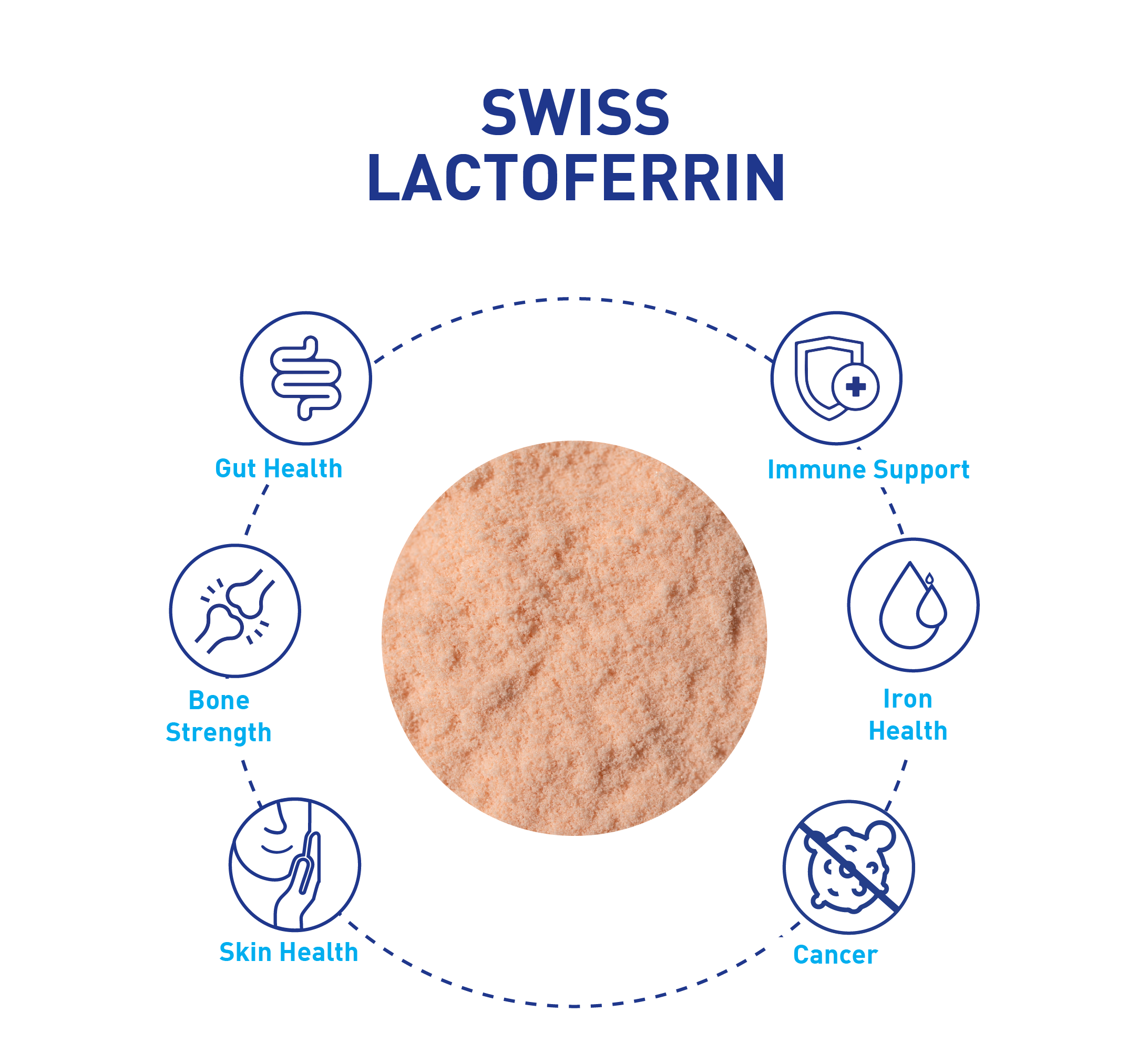
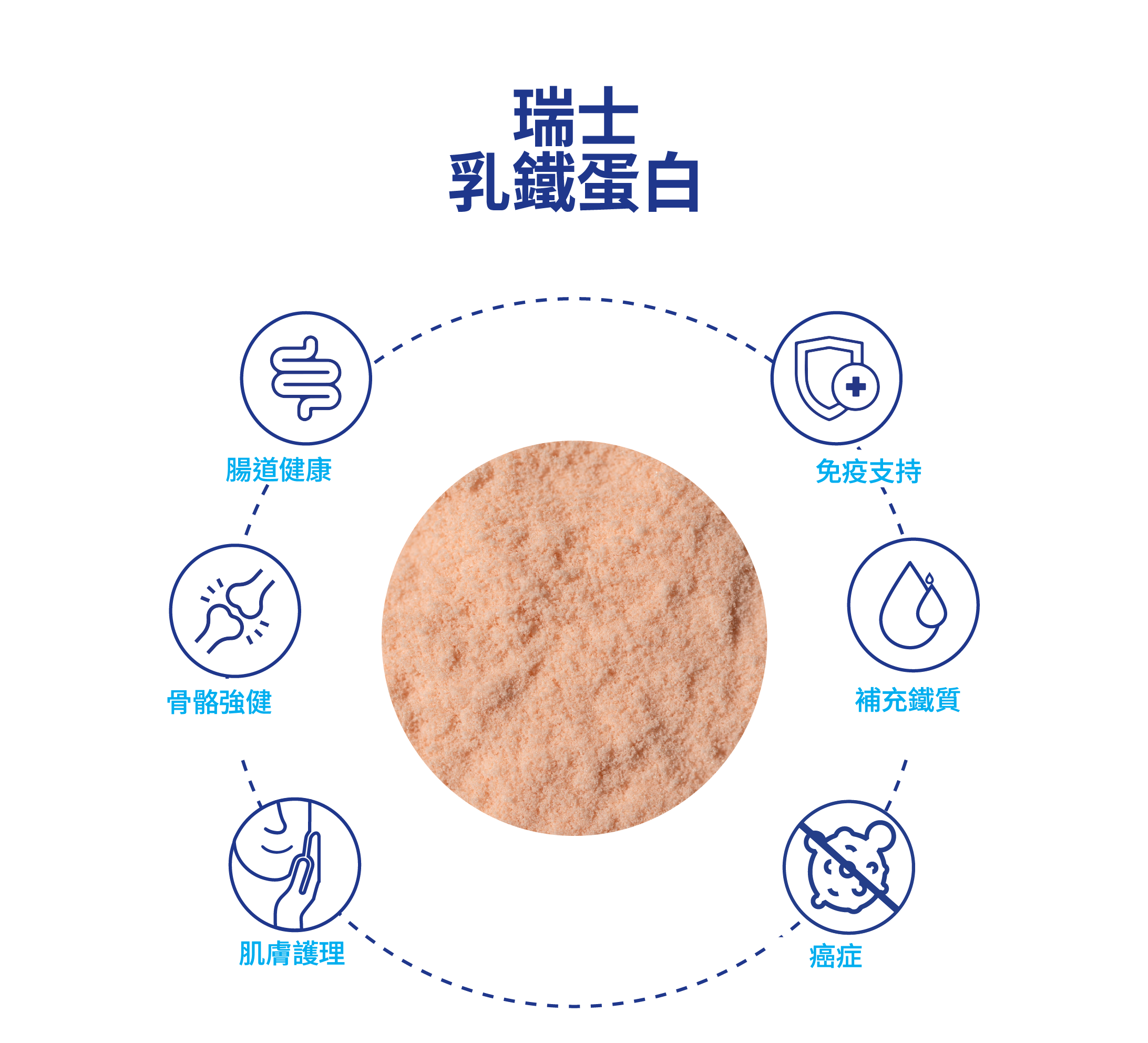
見證轉變:乳鐵蛋白的功效
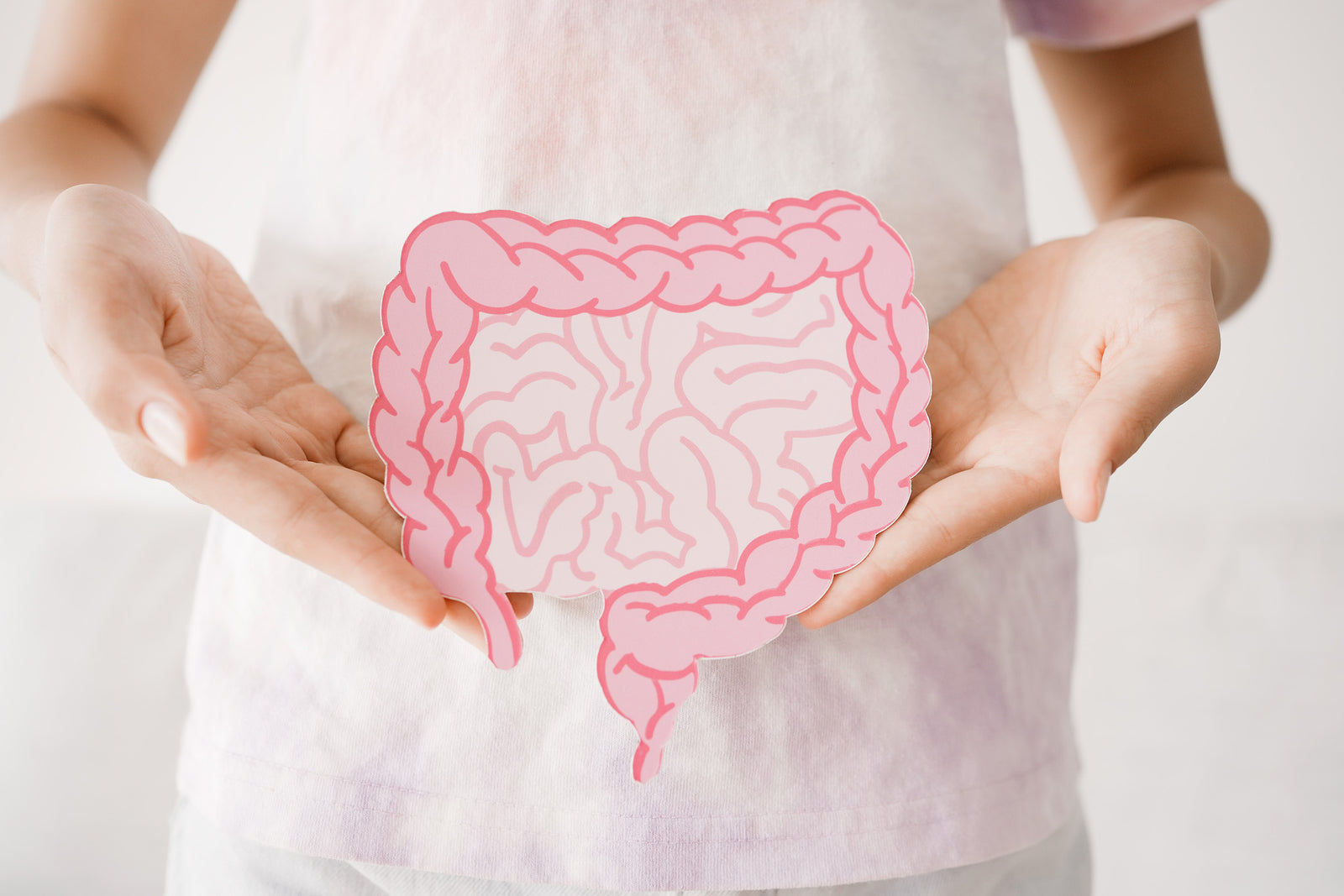
腸道健康
- 平衡腸道菌叢及益生菌生態
- 調節有益菌種
- 促進好菌增生(如雙歧桿菌和乳酸桿菌)
- 調節代謝過程
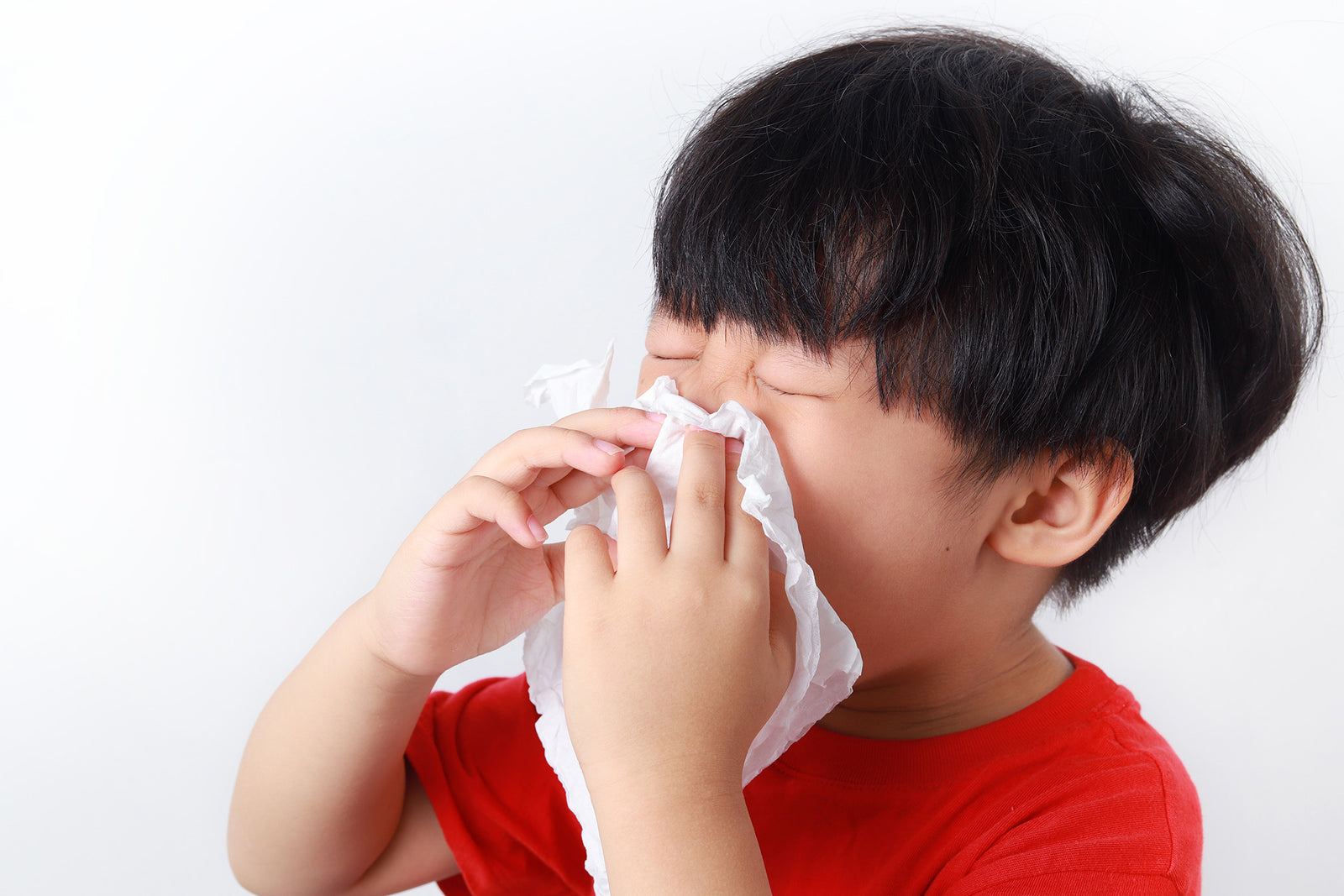
免疫支持
- 連結先天性和適應性免疫反應
- 透過多重機制增強免疫反應
- 刺激免疫細胞生長
- 調節免疫細胞活化

肌膚護理
- 預防潛在的細菌感染,抑制引起痤瘡的細菌生長
- 減少皮膚發炎
- 中和過度的免疫反應
- 促進皮膚傷口癒合

骨骼強健
- 影響骨組織再生
- 刺激軟骨細胞生長和活性
- 促進成骨細胞生長和活性
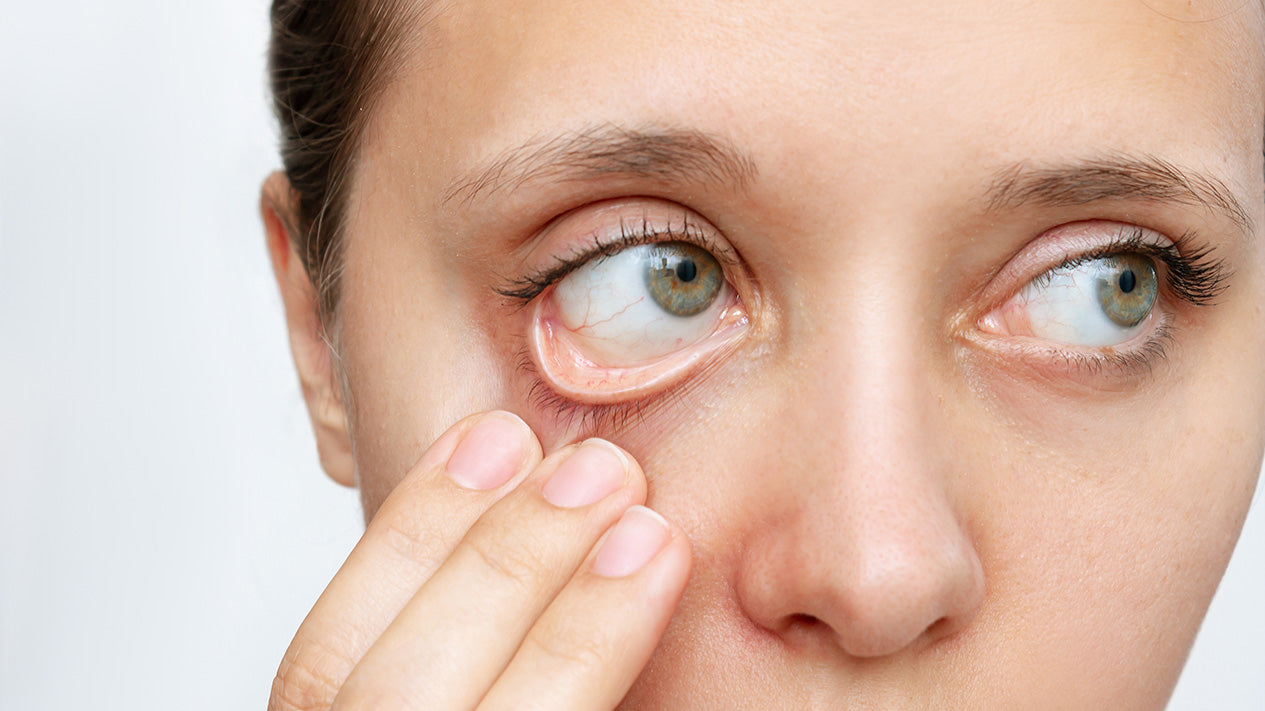
吸收鐵質
- 調節腸道的鐵質吸收
- 有效結合食物和補充劑中的鐵
- 支持紅血球中的氧氣運輸
- 有助改善疲勞
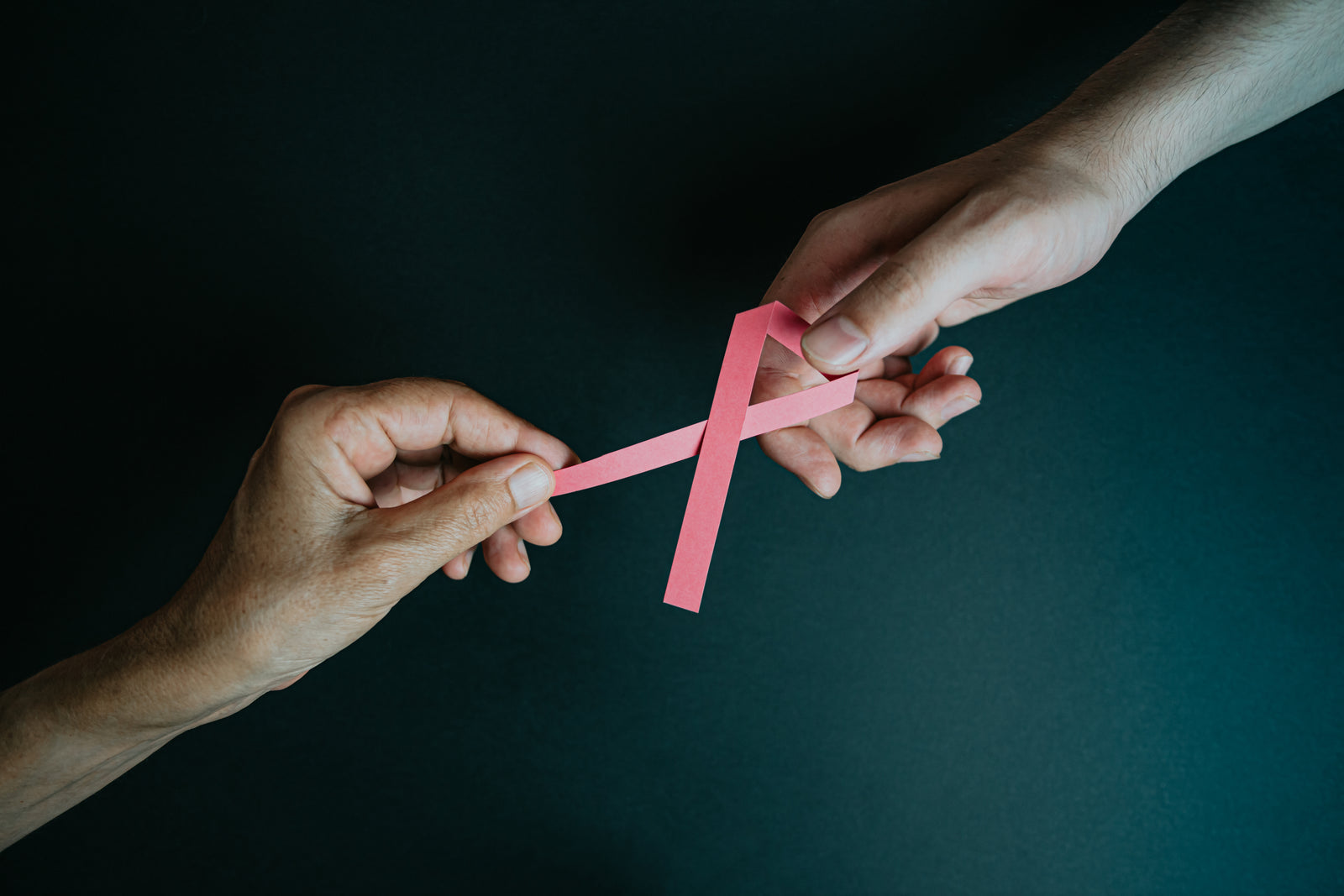
癌症
• 具有潛力的抗癌媒介
• 抑制多種癌症類型
多個實驗顯示,乳鐵蛋白對於乳癌 [47]、大腸癌 [48]、食道癌 [49]、肺癌 [50] 和膀胱癌 [51,52] 的抑制,具有顯著的效果。
.
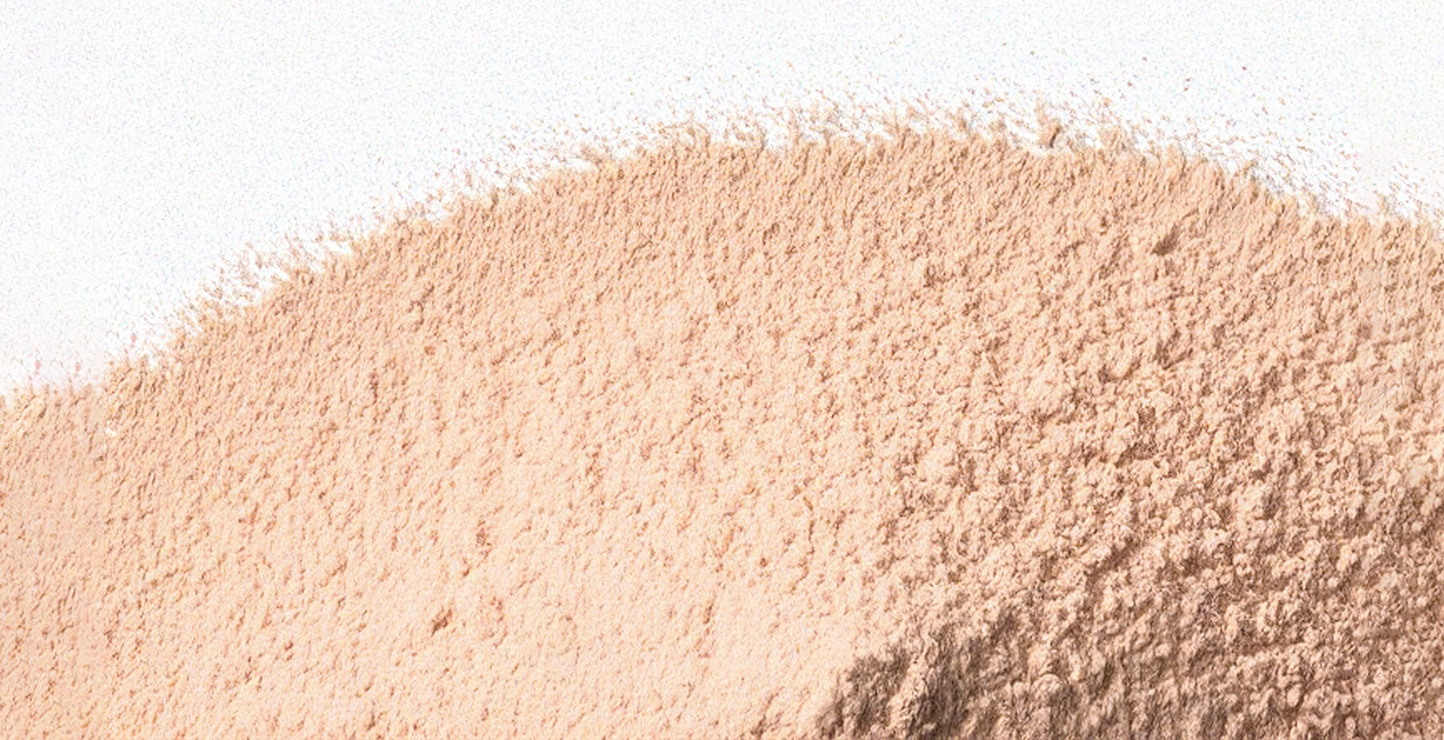
乳鐵蛋白:
你的天然守護
乳鐵蛋白是一種天然存在於我們體內強大而且多功能醣蛋白。淚水、唾液、母乳等體液內,都能夠找到高濃度的乳鐵蛋白,尤其是分娩不久後的母乳 (每公升約含5克) 。高濃度的乳鐵蛋白不但有助抵禦病菌、病毒 和真菌,而且能夠扮演保護的角色,保持身體健康。
開啟你的健康新一頁
身體內的一場旅程
可摺疊的內容

保護
乳鐵蛋白對游離鐵具高度親和力,能夠剝奪微生物生長所需的自由鐵並抑制其繁殖能力,從而防止疾病發生。 [7]
防禦
乳鐵蛋白能直接與細菌表面有相互作用,有助於破壞某些細菌的外膜[8]。同時亦能協助白血球抑制细菌感染和腫瘤所造成的擴散 [9],控制多種類型的疾病。
支持
乳鐵蛋白能夠與游離鐵結合的特性,不但有助改善腸道對鐵質的吸收,還能支持紅血球運送氧氣,減輕疲勞,讓身體有足夠的能量應付日常挑戰 [10]。
你身體的天然屏障
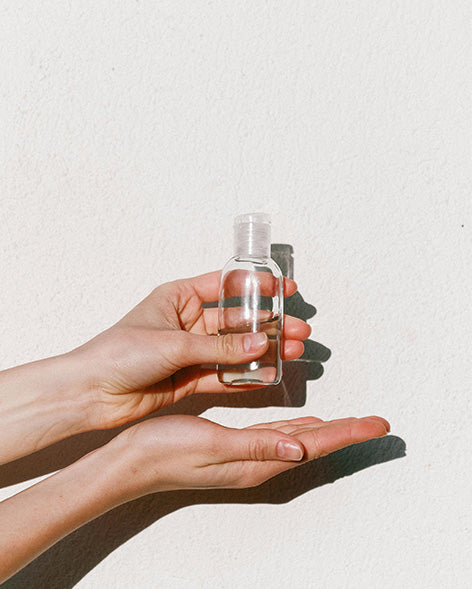
1. 抗病毒
乳鐵蛋白對多種 DNA 和 RNA 病毒表現出強大的抗病毒活性 [18],能阻止病毒進入宿主細胞和抑制病毒複製 [19]。它能夠直接附著於病毒顆粒表面,或巧妙地阻斷細胞受體,從而顯著降低病毒量。多項科學研究指出,乳鐵蛋白對於多種病毒有一定的影響,包括愛滋病毒、新冠肺炎、皰疹、C型肝炎、輪狀病毒和諾羅病毒 [20-26]。
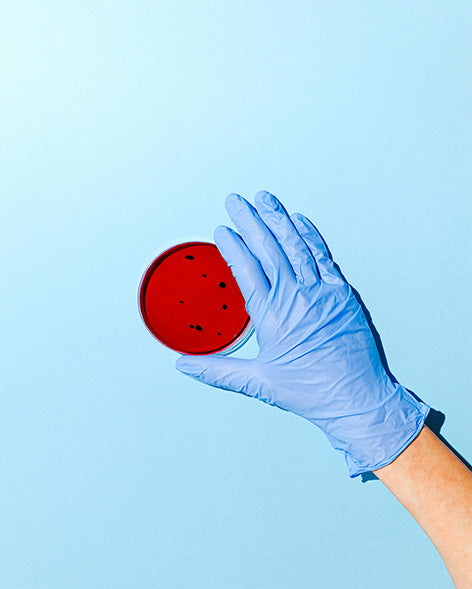
2. 抗細菌
乳鐵蛋白能夠與游離鐵結合,有效地限制細菌在感染部位使用這種微量元素,從而抑制細菌生長 [13]。此外,乳鐵蛋白還可以通過非鐵依賴機制 [16] 直接破壞細菌細胞表面 [14,15],引發細菌細胞死亡.
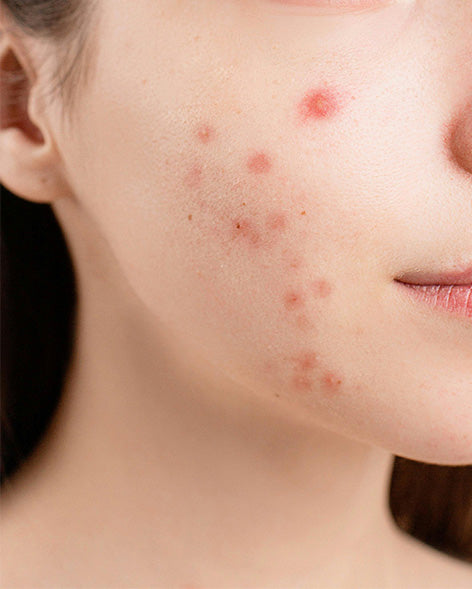
3. 抗發炎
乳鐵蛋白透過運送鐵質和活性氧類到發炎部位來調節先天免疫系統[27] [28]。它可以調節人體的防禦系統,減少過度發炎反應造成的組織損傷 [29-30]。臨床前和臨床研究證實了其在皮膚、呼吸道和胃腸道發炎中具有抗發炎作用 [31]。
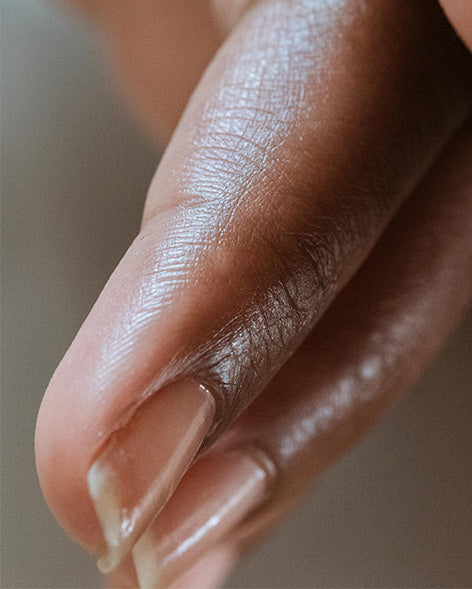
4. 抗真菌
乳鐵蛋白對各種酵母菌和黴菌表現出強大的抗真菌特性 [32]。其抗真菌機制包括與鐵結合、刺激宿主細胞免疫反應 [33-34],以及透過改變細胞表面的滲透性直接破壞真菌細胞壁 [35-36]。
可摺疊的內容
Foot Note
[1] González-Chávez, S. A., Arévalo-Gallegos, S., & Rascón-Cruz, Q. (2009). Lactoferrin: structure, function and applications. International journal of antimicrobial agents, 33(4), 301.e1–301.e3018.
[2] van der Strate, B. W., Beljaars, L., Molema, G., Harmsen, M. C., & Meijer, D. K. (2001). Antiviral activities of lactoferrin. Antiviral research, 52(3), 225–239.
[3] Rodríguez-Franco, D. A., Vázquez-Moreno, L., & Ramos-Clamont Montfort, G. (2005). Actividad antimicrobiana de la lactoferrina: mecanismos y aplicaciones clínicas potenciales [Antimicrobial mechanisms and potential clinical application of lactoferrin]. Revista latinoamericana de microbiologia, 47(3-4), 102–111.
[4] Czosnykowska-Łukacka, M., Orczyk-Pawiłowicz, M., Broers, B., & Królak-Olejnik, B. (2019). Lactoferrin in Human Milk of Prolonged Lactation. Nutrients, 11(10), 2350.
[5] Kell, D. B., Heyden, E. L., & Pretorius, E. (2020). The Biology of Lactoferrin, an Iron-Binding Protein That Can Help Defend Against Viruses and Bacteria. Frontiers in immunology, 11, 1221.
[6] Fernandes, K. E., & Carter, D. A. (2017). The Antifungal Activity of Lactoferrin and Its Derived Peptides: Mechanisms of Action and Synergy with Drugs against Fungal Pathogens. Frontiers in microbiology, 8, 2.
[7] Legrand D. (2016). Overview of Lactoferrin as a Natural Immune Modulator. The Journal of pediatrics, 173 Suppl, S10–S15.
[8[ Actor, J. K., Hwang, S. A., & Kruzel, M. L. (2009). Lactoferrin as a natural immune modulator. Current pharmaceutical design, 15(17), 1956–1973.
[9[ Vivier, E., Tomasello, E., Baratin, M., Walzer, T., & Ugolini, S. (2008). Functions of natural killer cells. Nature immunology, 9(5), 503–510.
[10] Vivier, E., Tomasello, E., Baratin, M., Walzer, T., & Ugolini, S. (2008). Functions of natural killer cells. Nature immunology, 9(5), 503–510.
[11] González-Chávez, S. A., Arévalo-Gallegos, S., & Rascón-Cruz, Q. (2009). Lactoferrin: structure, function and applications. International journal of antimicrobial agents, 33(4), 301.e1–301.e3018.
[12] Legrand D. (2016). Overview of Lactoferrin as a Natural Immune Modulator. The Journal of pediatrics, 173 Suppl, S10–S15.
[13] González-Chávez, S. A., Arévalo-Gallegos, S., & Rascón-Cruz, Q. (2009). Lactoferrin: structure, function and applications. International journal of antimicrobial agents, 33(4), 301.e1–301.e3018.
[14] Kalmar, J. R., & Arnold, R. R. (1988). Killing of Actinobacillus actinomycetemcomitans by human lactoferrin. Infection and immunity, 56(10), 2552–2557.
[15] Bortner, C. A., Arnold, R. R., & Miller, R. D. (1989). Bactericidal effect of lactoferrin on Legionella pneumophila: effect of the physiological state of the organism. Canadian journal of microbiology, 35(11), 1048–1051.
[16] Valenti, P., & Antonini, G. (2005). Lactoferrin: an important host defence against microbial and viral attack. Cellular and molecular life sciences : CMLS, 62(22), 2576–2587.
[17] García-Montoya, I. A., Cendón, T. S., Arévalo-Gallegos, S., & Rascón-Cruz, Q. (2012). Lactoferrin a multiple bioactive protein: an overview. Biochimica et biophysica acta, 1820(3), 226–236.
[18] van der Strate, B. W., Beljaars, L., Molema, G., Harmsen, M. C., & Meijer, D. K. (2001). Antiviral activities of lactoferrin. Antiviral research, 52(3), 225–239.
[19] Qiu, J., Hendrixson, D. R., Baker, E. N., Murphy, T. F., St Geme, J. W., 3rd, & Plaut, A. G. (1998). Human milk lactoferrin inactivates two putative colonization factors expressed by Haemophilus influenzae. Proceedings of the National Academy of Sciences of the United States of America, 95(21), 12641–12646.
[20] Berkhout, B., Floris, R., Recio, I., & Visser, S. (2004). The antiviral activity of the milk protein lactoferrin against the human immunodeficiency virus type 1. Biometals : an international journal on the role of metal ions in biology, biochemistry, and medicine, 17(3), 291–294.
[21] Chang, R., Ng, T. B., & Sun, W. Z. (2020). Lactoferrin as potential preventative and adjunct treatment for COVID-19. International journal of antimicrobial agents, 56(3), 106118.
[22] Hasegawa, K., Motsuchi, W., Tanaka, S., & Dosako, S. (1994). Inhibition with lactoferrin of in vitro infection with human herpes virus. Japanese journal of medical science & biology, 47(2), 73–85.
[23] Nozaki, A., Tanaka, K., Naganuma, A., & Kato, N. (2002). Nihon rinsho. Japanese journal of clinical medicine, 60(4), 819–829.
[24] Ikeda, M., Nozaki, A., Sugiyama, K., Tanaka, T., Naganuma, A., Tanaka, K., Sekihara, H., Shimotohno, K., Saito, M., & Kato, N. (2000). Characterization of antiviral activity of lactoferrin against hepatitis C virus infection in human cultured cells. Virus research, 66(1), 51–63.
[25] Superti, F., Ammendolia, M. G., Valenti, P., & Seganti, L. (1997). Antirotaviral activity of milk proteins: lactoferrin prevents rotavirus infection in the enterocyte-like cell line HT-29. Medical microbiology and immunology, 186(2-3), 83–91.
[26] Oda, H., Kolawole, A. O., Mirabelli, C., Wakabayashi, H., Tanaka, M., Yamauchi, K., Abe, F., & Wobus, C. E. (2021). Antiviral effects of bovine lactoferrin on human norovirus. Biochemistry and cell biology = Biochimie et biologie cellulaire, 99(1), 166–172.
[27] Legrand D, Elass E, Carpentier M, Mazurier J. Interactions of lactoferrin with cells involved in immune function. Biochem Cell Biol. 2006 Jun;84(3):282-90.
[28] Legrand D. (2016). Overview of Lactoferrin as a Natural Immune Modulator. The Journal of pediatrics, 173 Suppl, S10–S15.
[29] Drago-Serrano, M. E., Campos-Rodríguez, R., Carrero, J. C., & de la Garza, M. (2017). Lactoferrin: Balancing Ups and Downs of Inflammation Due to Microbial Infections. International journal of molecular sciences, 18(3), 501.
[30[ Kruzel ML, Zimecki M, Actor JK. Lactoferrin in a Context of Inflammation-Induced Pathology. Front Immunol. 2017 Nov 6;8:1438.
[31] Conneely OM. Antiinflammatory activities of lactoferrin. J Am Coll Nutr. 2001 Oct;20(5 Suppl):389S-395S; discussion 396S-397S.
[32] Fernandes, K. E., & Carter, D. A. (2017). The Antifungal Activity of Lactoferrin and Its Derived Peptides: Mechanisms of Action and Synergy with Drugs against Fungal Pathogens. Frontiers in microbiology, 8, 2.
[33] Kirkpatrick CH, Green I, Rich RR, Schade AL. Inhibition of growth of Candida albicans by iron-unsaturated lactoferrin: relation to host-defense mechanisms in chronic mucocutaneous candidiasis. J Infect Dis. 1971 Dec;124(6):539-44.
[34] Zarember KA, Sugui JA, Chang YC, Kwon-Chung KJ, Gallin JI. Human polymorphonuclear leukocytes inhibit Aspergillus fumigatus conidial growth by lactoferrin-mediated iron depletion. J Immunol. 2007 May 15;178(10):6367-73.
[35] Wakabayashi H, Abe S, Okutomi T, Tansho S, Kawase K, Yamaguchi H. Cooperative anti-Candida effects of lactoferrin or its peptides in combination with azole antifungal agents. Microbiol Immunol. 1996;40(11):821-5.
[36] Kuipers, M. E., de Vries, H. G., Eikelboom, M. C., Meijer, D. K., & Swart, P. J. (1999). Synergistic fungistatic effects of lactoferrin in combination with antifungal drugs against clinical Candida isolates. Antimicrobial agents and chemotherapy, 43(11), 2635–2641.
[37] Cutone, A., Rosa, L., Ianiro, G., Lepanto, M. S., Bonaccorsi di Patti, M. C., Valenti, P., & Musci, G. (2020). Lactoferrin's Anti-Cancer Properties: Safety, Selectivity, and Wide Range of Action. Biomolecules, 10(3), 456.
[38] Azhar J., Hussain T. & Mohammadabadi T. (2021). The overview on anti-cancer effects of milk lactoferrin. World J Pharm Sci, 9(5): 135-144.
[39] Cutone, A., Rosa, L., Ianiro, G., Lepanto, M. S., Bonaccorsi di Patti, M. C., Valenti, P., & Musci, G. (2020). Lactoferrin's Anti-Cancer Properties: Safety, Selectivity, and Wide Range of Action. Biomolecules, 10(3), 456.
[40] Varadhachary A, Wolf JS, Petrak K, O'Malley BW Jr, Spadaro M, Curcio C, Forni G, Pericle F. Oral lactoferrin inhibits growth of established tumors and potentiates conventional chemotherapy. Int J Cancer. 2004 Sep 1;111(3):398-403.
[41] Damiens E, El Yazidi I, Mazurier J, Duthille I, Spik G, Boilly-Marer Y. Lactoferrin inhibits G1 cyclin-dependent kinases during growth arrest of human breast carcinoma cells. J Cell Biochem. 1999 Sep 1;74(3):486-98.
[42] Ramírez-Rico G, Drago-Serrano ME, León-Sicairos N and de la Garza M (2022) Lactoferrin: A Nutraceutical with Activity against Colorectal Cancer. Front. Pharmacol. 13:855852.
[43] Moradian, Fatemeh & Farziyan, Mohammad & Rafiei, Alireza. (2016). Anticancer Effect of Bovine Lactoferrin on Human Esophagus Cancer Cell Line. Res Mol Med. 4.
[44] Yu-Tang Tung, Hsiao-Ling Chen, Chih-Ching Yen, Po-Ying Lee, Hsin-Chung Tsai, Ming-Fong Lin, Chuan-Mu Chen, Bovine lactoferrin inhibits lung cancer growth through suppression of both inflammation and expression of vascular endothelial growth factor, Journal of Dairy Science, Volume 96, Issue 4, 2013, Pages 2095-2106.
[45] Tsuda H, Sekine K, Fujita K, Ligo M. Cancer prevention by bovine lactoferrin and underlying mechanisms--a review of experimental and clinical studies. Biochem Cell Biol. 2002;80(1):131-6.
[46] Gibbons JA, Kanwar RK, Kanwar JR. Lactoferrin and cancer in different cancer models. Front Biosci (Schol Ed). 2011 Jun 1;3(3):1080-8. doi: 10.2741/212.
[47] Damiens E, El Yazidi I, Mazurier J, Duthille I, Spik G, Boilly-Marer Y. Lactoferrin inhibits G1 cyclin-dependent kinases during growth arrest of human breast carcinoma cells. J Cell Biochem. 1999 Sep 1;74(3):486-98.
[48[ Ramírez-Rico G, Drago-Serrano ME, León-Sicairos N and de la Garza M (2022) Lactoferrin: A Nutraceutical with Activity against Colorectal Cancer. Front. Pharmacol. 13:855852.
[49] Moradian, Fatemeh & Farziyan, Mohammad & Rafiei, Alireza. (2016). Anticancer Effect of Bovine Lactoferrin on Human Esophagus Cancer Cell Line. Res Mol Med. 4.
[50] Yu-Tang Tung, Hsiao-Ling Chen, Chih-Ching Yen, Po-Ying Lee, Hsin-Chung Tsai, Ming-Fong Lin, Chuan-Mu Chen, Bovine lactoferrin inhibits lung cancer growth through suppression of both inflammation and expression of vascular endothelial growth factor, Journal of Dairy Science, Volume 96, Issue 4, 2013, Pages 2095-2106.
[51] Tsuda H, Sekine K, Fujita K, Ligo M. Cancer prevention by bovine lactoferrin and underlying mechanisms--a review of experimental and clinical studies. Biochem Cell Biol. 2002;80(1):131-6.
[52] Gibbons JA, Kanwar RK, Kanwar JR. Lactoferrin and cancer in different cancer models. Front Biosci (Schol Ed). 2011 Jun 1;3(3):1080-8. doi: 10.2741/212.
